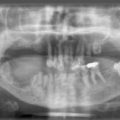1]. They are both often seen as an unnecessary intrusion into the routine treatment of patients. It can become very frustrating for treatment personnel when the performance of a treatment machine needs to be checked and confirmed following the repair after a breakdown. It is, however, apparent from previous incidents that measurement of a physical parameter could have averted incorrect treatment over a lengthy period before clinical indicators indicated a problem.
It is important to be able to put the checks on performance into context. This can be done in relation to the treatment planning and dose prediction undertaken for the treatment of a patient. For example, considerable effort is used on occasions to achieve a dose distribution satisfying the ICRU 50 [
A random combination of these many factors throughout the treatment cannot be guaranteed and the performance variation that might result without adequate quality control and planned maintenance could well negate or even swamp the variation expected from the planned dose prediction.
A comprehensive system of quality control for all the equipment used in radiotherapy will ensure that accurate and reproducible treatment is being delivered.
[1] Statutory Instrument 2000 No. 1059. The Ionising Radiation (Medical Exposures) Regulations. 2000.
[2] British Standards Institute. BSEN 6061-1-1:2002. Medical electrical equipment. General requirements for safety. Collateral standard. Safety requirements for medical electrical systems.
[3] British Standards Institute. BSEN 60976:2001. Medical electrical equipment – Medical electron accelerators – Functional performance characteristics.
[4] British Standards Institute. BS 5724-3.1: Supplement 1: 1990: Medical electrical equipment – Part 3: Particular requirements for performance – Section 3.1 Methods of declaring functional performance characteristics of medical electron accelerators in the range 1 MeV to 50 MeV – Supplement 1. Guide to functional performance values.
[5] Institute of Physics and Engineering in Medicine. IPEM Report 81. Physics Aspects of Quality Control in Radiotherapy.
[6] ICRP Publication 44. Protection of the patient in radiation therapy. Pergamon Press.
[7] Travis L.B., et al. Cumulative absolute breast cancer risk for young women treated for Hodgkin lymphoma. J Natl Cancer Inst. 2005;97:1394–1395.
[8] Lorigan P., Radford J., Howell A., Thatcher N. Lung cancer after treatment for Hodgkin’s lymphoma: a systematic review. Lancet Oncol. 2005;6:773–779.
[9] Amemiya K., Shibuya H., Yoshimura R., Okada N. The risk of radiation-induced cancer in patients with squamous cell carcinoma of the head and neck and its results of treatment. Br J Radiol. 2005;78:1028–1033.
[10] IAEA Safety Report Series No 17 Lessons learned from accidental exposures in radiotherapy. 2000.
[11] Dutreix A. When and how can we improve precision in radiotherapy? Radiother Oncol. 1984;2:275–292.
[12] Herring DF., Compton D.M.J. The degree of precision required in the radiation dose delivered in cancer radiotherapy. Br J Radiol. 1971;(Suppl. 5):51–58.
[13] The Exeter District Health Authority. The Report of the Committee of Enquiry into the overdoses administered in the Department of Radiotherapy in the period February to July 1988. 28 November. 1988.
[14] West Midlands Health Authority. Second Report of the Independent Enquiry into the conduct of isocentric radiotherapy at the North Staffordshire Royal Infirmary, 1994. 1994.
[15] Thwaites D.I., et al. A dosimetric intercomparison of megavoltage photon beams in UK radiotherapy centres. Phys Med Biol. 1992;37:445–661.
[16] ICRU Report 50 Prescribing, recording, and reporting photon beam therapy. International Commission on Radiation Units and Measurements. 1993.
Stay updated, free articles. Join our Telegram channel

Full access? Get Clinical Tree




